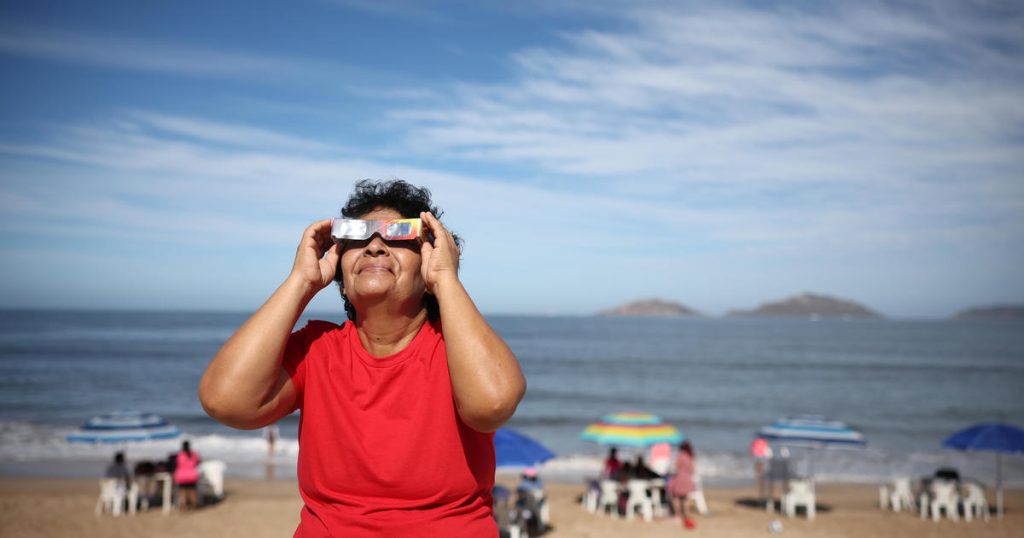As millions of Americans prepare to watch Monday’s total solar eclipse, concerns have arisen around radiation exposure. However, NASA has debunked myths related to the eclipse, reassuring the public that there is no risk of harmful rays causing blindness. During the eclipse, the moon will pass in front of the sun, casting a shadow on Earth’s surface and revealing only the sun’s outer atmosphere, known as the corona. Although some may worry about radiation emitted during the eclipse, NASA has clarified that the electromagnetic radiation from the corona is too faint to cause any harm when it reaches Earth.
While it is not safe to look directly at the solar eclipse without special glasses, NASA has dispelled the myth that pregnant individuals should avoid watching the event due to false beliefs about harmful radiations. In addition to the electromagnetic radiation from the corona, the space agency explained the harmless effect of neutrinos, particles born deep within the sun that pass into space without causing harm to humans or developing fetuses. Another common misconception debunked by NASA is the idea that radiation during a total solar eclipse can poison food prepared during the event. Over the years, fears surrounding eclipses have led to unfounded stories about the potential dangers they pose, including the notion of eclipse-related food poisoning.
As people across the country prepare to witness the rare celestial event, NASA’s clarification on eclipse myths offers reassurance and clarity. By addressing concerns around radiation exposure, the space agency aims to educate the public on the scientific facts behind solar eclipses. While the eclipse may evoke awe and wonder in spectators, it is important to approach the event with accurate information and take necessary precautions to ensure safety and enjoyment. As NASA debunks misconceptions and promotes understanding of the eclipse phenomenon, viewers can engage in the experience with greater knowledge and appreciation for the natural world.
The debunking of eclipse myths by NASA serves to dispel unnecessary fears and provide accurate information to the public. By addressing common misconceptions like the supposed blindness-inducing rays and food poisoning risks during eclipses, the space agency aims to promote scientific literacy and awareness. As Americans gather to witness the solar eclipse, understanding the nature of the event and the safety precautions to follow can enhance the viewing experience. With NASA’s expertise and research, viewers can appreciate the celestial spectacle without undue concerns about radiation exposure or unfounded dangers associated with eclipses.
While the total solar eclipse may evoke excitement and curiosity, it is essential to approach the event with accurate information and understanding of the science behind it. By clarifying myths and misconceptions surrounding eclipses, NASA provides valuable insights into the celestial phenomenon and ensures public awareness of the safety measures to take. As millions of Americans prepare to witness the rare cosmic event, NASA’s debunking of eclipse myths offers a sense of security and confidence in the scientific knowledge surrounding solar eclipses. By dispelling unfounded fears and promoting accurate information, the space agency contributes to a deeper appreciation and enjoyment of the natural world and its spectacular phenomena.


